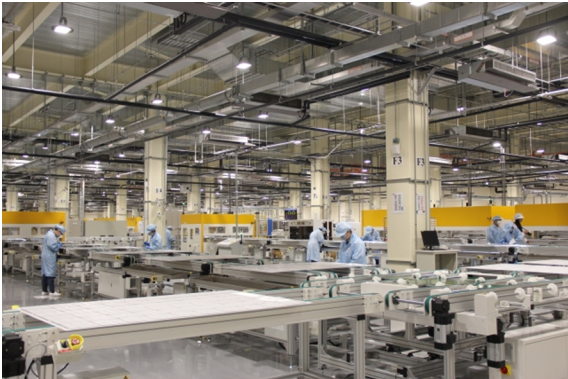After the apparent hard stop of the PV installation boom in China, speculation abounds on which markets could benefit from the unavoidable slide of PV component prices that will follow Beijing's abrupt about turn, writes polysilicon market researcher Johannes Bernreuter.
The Intersolar Europe conference offered up several hopeful candidates.
The cap China suddenly put on its domestic PV market three weeks ago hit the global industry like a bombshell but there had been warning signs.
“[Myself] and others should have seen coming what was announced on June 1,” said Frank Haugwitz, Director of Beijing-based consultancy the Asia Europe Clean Energy Advisory, at the Intersolar Europe conference in Munich on Tuesday.
As early as April 18, the Chinese government had issued an amendment draft of the support policy for distributed generation systems, aimed at controlling new PV installations as, last year, engineering and construction companies had simply kicked off new PV projects and sought approval afterwards.
The resulting deployment of 53 GW was “neither intended nor planned by the government,” said Mr. Haugwitz. Faced with ballooning feed-in tariff payments, Beijing applied the emergency brake just after a record SNEC solar trade show in Shanghai closed its doors in late May.
Mr. Haugwitz now expects new PV installations of 30-35 GW in China this year and while industry body SolarPower Europe predicts the market will recover within one or two years, the consultant only sees 20-25 GW each of new capacity in 2019 and 2020.
In view of China's massive manufacturing overcapacity, Mr. Haugwitz foresees fierce competition, rather than industry consolidation: “China loves competition – that drives down the cost,” he said.
According to Bloomberg New Energy Finance, solar module prices will fall by up to 34% by the end of the year, which would more than compensate for the 30% duty President Donald Trump has imposed on module imports into the United States. This calculation was raised by the audience at the Intersolar conference, although Kelly Knutsen – from the California Solar and Storage Association – mentioned large-scale PV projects worth
$2.5 billion have already been frozen in the wake of the Trump decision.
Nevertheless, GTM Research's forecast that U.S. installations this year would be more or less similar to the 10.6 GW achieved in 2017, could turn out conservative.
India is another candidate that might benefit from slumping module prices, however Gundu Sabde – founder of Indian installer RelyOn Solar – warned record low prices could backfire, as the government has been mulling safeguard duties, adding: “The issue can come back quickly.”
Growing concern about potential duties has already slowed down project development; hence this year India will probably stay below the 9.6 GW installed in 2017.
Japan, the world's fourth largest PV market, is still fed by a 35 GW pipeline of approved FIT projects. After new installations of 7 GW last year, Izumi Kaizuka – from market research firm RTS – expects 6-7.5 GW this year, and 4-5 GW in 2020.
Europe's more mature solar markets are of course only too familiar with the boom-bust cycle China is now undergoing, but two of the world's early adopters – Spain and Italy – are about to write comeback stories, both driven by new governments.
José Donoso, General Director of Spanish PV association UNEF, reported 30 GW of utility-scale projects are at the planning stage for power purchase agreements; with the support of the new socialist minority government. Mr. Donoso also expects 300-400 MW of new PV for self-consumption in 2019.
Similarly optimistic was Gianni Chianetta, Head of International Affairs at Italian PV association ItaliaSolare. According to Chianetta, the new government coalition of La Lega and the Five Star Movement shows “strong commitment to solar”, although neither party has yet responded to pv magazine‘s requests to outline their solar policies, made three weeks ago.
Chianetta says a new decree will be approved by the end of the year which would open a “big opportunity for self-consumption and large-scale plants,” adding: “I am very positive on the Italian market.”
By Johannes Bernreuter, head of the polysilicon market research firm Bernreuter Research
This content is protected by copyright and may not be reused. If you want to cooperate with us and would like to reuse some of our content, please contact: editors@pv-magazine.com.



By submitting this form you agree to pv magazine using your data for the purposes of publishing your comment.
Your personal data will only be disclosed or otherwise transmitted to third parties for the purposes of spam filtering or if this is necessary for technical maintenance of the website. Any other transfer to third parties will not take place unless this is justified on the basis of applicable data protection regulations or if pv magazine is legally obliged to do so.
You may revoke this consent at any time with effect for the future, in which case your personal data will be deleted immediately. Otherwise, your data will be deleted if pv magazine has processed your request or the purpose of data storage is fulfilled.
Further information on data privacy can be found in our Data Protection Policy.